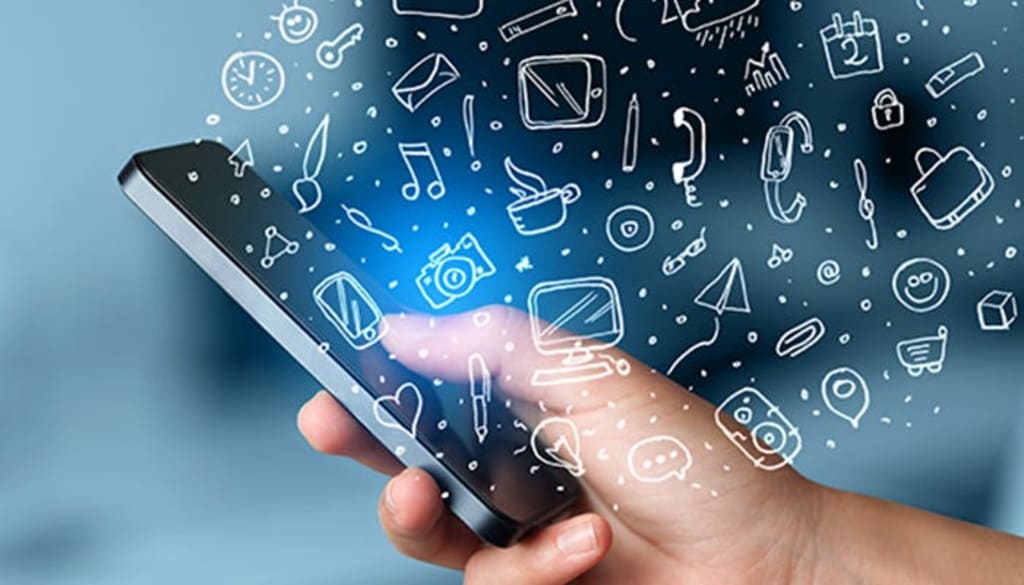WHY MORE TECHNOLOGY, LESS HEALTHIER
Exploring the Impact of Technology on Human Health

The pervasive integration of technology into various aspects of modern life has raised concerns about its potential adverse effects on overall health and well-being. Several factors contribute to this association.
Sedentary Lifestyle: The widespread use of electronic devices, such as smartphones, computers, and televisions, often leads to a more sedentary lifestyle. Excessive screen time can contribute to physical inactivity, leading to issues like obesity, cardiovascular problems, and musculoskeletal issues.
Sleep Disruption: The constant availability of digital devices can disrupt sleep patterns. Exposure to the blue light emitted by screens, late-night device use, and the constant connectivity through notifications can contribute to sleep disturbances, affecting the quality and duration of sleep.
Social Isolation: While technology connects people across the globe, it can also contribute to social isolation on a personal level. Excessive use of social media may lead to a decline in face-to-face interactions, potentially impacting mental health and well-being.
Mental Health Challenges: The omnipresence of technology, along with the pressures of constant connectivity, can contribute to stress, anxiety, and other mental health issues. The comparison culture on social media platforms may exacerbate feelings of inadequacy and contribute to psychological distress.
Physical Health Concerns: The use of certain technologies, such as handheld devices and computers, may contribute to poor posture and ergonomic issues, leading to discomfort and physical health problems over time.
Attention and Productivity: Constant exposure to digital stimuli can impact attention spans and overall productivity. The constant multitasking and information overload may contribute to decreased focus and cognitive fatigue.
Sedentary Lifestyle
Physical Health Implications: Prolonged periods of sitting and reduced physical activity associated with technology use can contribute to health issues like obesity, diabetes, and cardiovascular diseases.
Recommendations: Encouraging breaks, incorporating physical activity, and promoting ergonomic workspaces can help mitigate the impact of a sedentary lifestyle.
Sleep Disruption
Blue Light Exposure: The blue light emitted by screens suppresses melatonin production, affecting the circadian rhythm and making it challenging to initiate and maintain sleep.
Sleep Hygiene: Establishing a "digital curfew" by reducing screen time before bedtime and using blue light filters on devices can help improve sleep hygiene.
Social Isolation
Quality vs. Quantity: While technology facilitates connection, it's essential to prioritize meaningful, face-to-face interactions to prevent feelings of isolation.
Balanced Use: Encouraging a balanced approach to social media and online communication can help maintain a healthy social life.
Mental Health Challenges
Digital Detox: Taking breaks from technology, practicing mindfulness, and seeking professional support when needed can contribute to mental well-being.
Education and Awareness: Promoting awareness of the potential impact of technology on mental health can empower individuals to make informed choices.
Physical Health Concerns
Ergonomics: Educating individuals about proper ergonomics, encouraging regular breaks, and incorporating stretching exercises can help address physical health concerns associated with technology use.
Attention and Productivity
Digital Minimalism: Adopting digital minimalism, where individuals intentionally limit the use of non-essential technology, can enhance focus and productivity.
Time Management: Implementing effective time management strategies, such as the Pomodoro Technique, can help improve concentration and efficiency.
In conclusion, while the increasing prevalence of technology has undoubtedly brought about numerous benefits and advancements, it is imperative to acknowledge and address the potential impacts on overall health and well-being. Striking a balance between technological engagement and maintaining a healthy lifestyle is crucial. By being aware of the sedentary nature of prolonged screen time, the potential for sleep disruption, the nuances of social interactions, mental health challenges, physical implications, and attention and productivity concerns, individuals can make informed choices.
Encouraging healthy habits, such as regular physical activity, mindful technology use, and fostering meaningful social connections, can mitigate the negative effects associated with technology. Additionally, promoting education and awareness about the potential pitfalls allows for a proactive approach in managing and maintaining well-being in an increasingly digital age.
Ultimately, the key lies in adopting a conscious and intentional approach to technology, using it as a tool to enhance, rather than detract from, the overall quality of life. With mindful choices and a holistic perspective, individuals can navigate the complexities of modern technology while prioritizing their physical, mental, and social well-being.
About the Creator
Enjoyed the story? Support the Creator.
Subscribe for free to receive all their stories in your feed. You could also pledge your support or give them a one-off tip, letting them know you appreciate their work.






Comments
There are no comments for this story
Be the first to respond and start the conversation.